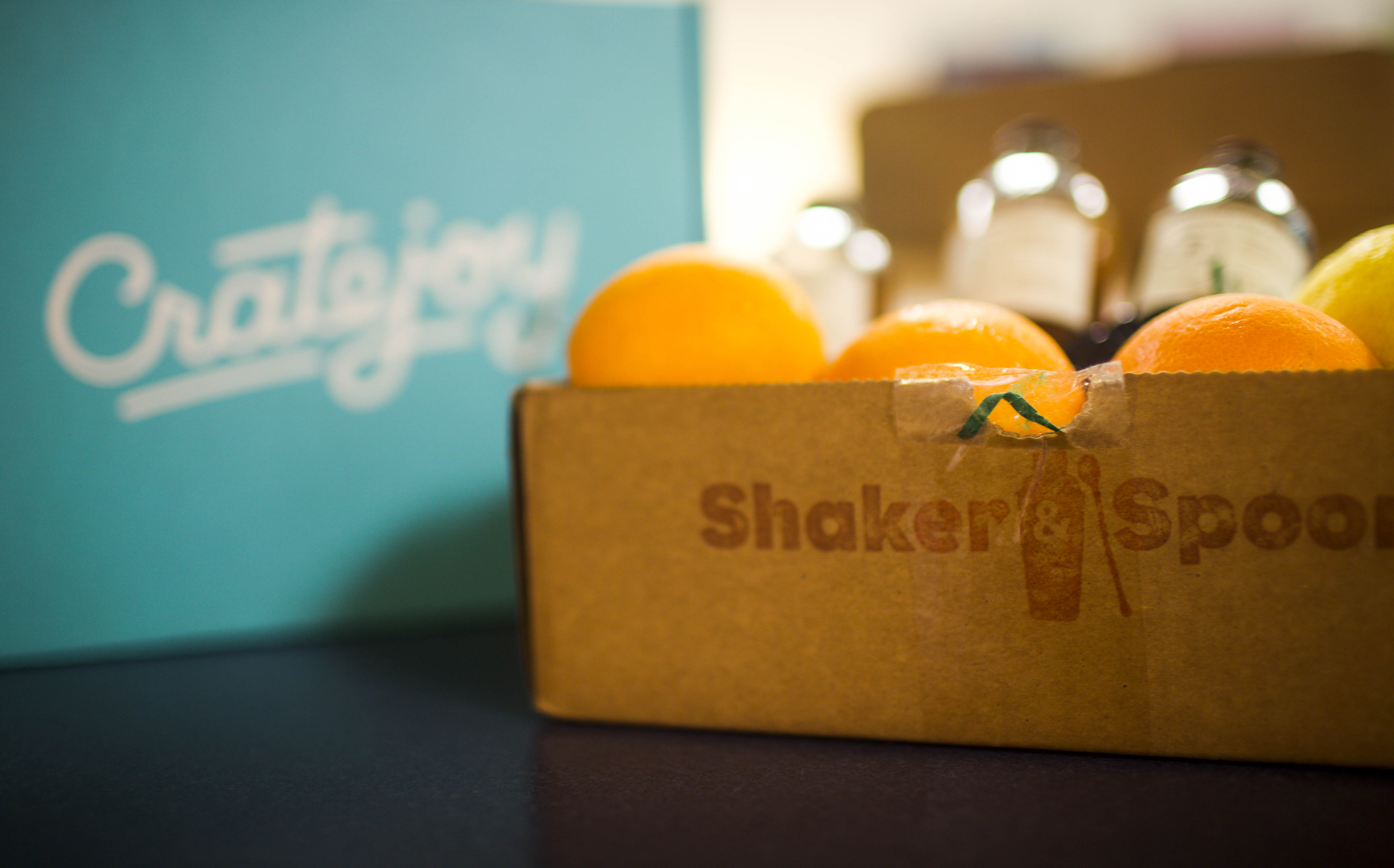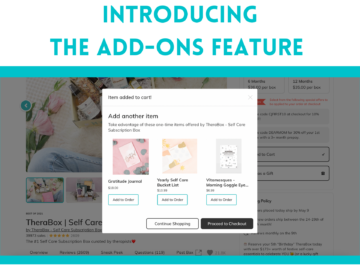With ecommerce, you can reach an audience that you otherwise wouldn’t be able to. Approximately 30% of Millennials (21-35) report ordering groceries online to be delivered to their home. Additionally, 57% of millennials are willing to use e-commerce to shop for food and other groceries, according to a Nielsen Report.
Not just that, but online grocery shopping is continuing to grow. In 2015, Americans spent $7 billion on groceries online, and this figure is projected to jump to $18 billion by 2020.
How can you take advantage of ecommerce? Here are 5 ways you can sell your food items online!
1. Start a Subscription Box

There are a lot of benefits of a subscription business model. Not to mention that the industry’s popularity is soaring. With Cratejoy, you can take advantage of the benefits of a subscription model, while also reaping the perks of an online marketplace – just look at the success of boxes like Jerky Snob!
The Pros:
- Reach a new audience: By supporting your one-time sales with a subscription box, you are able to reach customers that want your products regularly.
- Recurring revenue: Rather than selling your product to a customer once, you can sell over and over by getting your audience to subscribe, which means consistent revenue each month
- Waste less, spend less: In the food industry, there’s always the risk of inventory going bad. With a subscription business, you’ll know how many subscribers you’ll have and you’ll know how much you’ll have to produce. In other words, you don’t have to worry as much about falling short or overproducing!
- Sampling: If you make a variety of different goods, a subscription box is a perfect way to get customers to try all of your different products.
The Cons:
- Subscriber commitment: You may have to be more creative with your marketing, as getting someone to commit to a subscription takes a bit more effort than getting someone to make a one-time purchase.
- Always moving: Your subscribers expect you to deliver regularly. You have to make sure you’re delivering value month after month and able to meet demand, or you could lose valuable subscribers.
2. Your Own Online Store

Managing your own online store gives you a lot of autonomy when selling your products. No matter which channel you decide to invest heavily in, managing your own store will always have its benefits.
The Pros:
- Establish your brand: Design and format your store exactly how you want without regulations and restrictions from marketplaces. This is a great way to construct and manage your brand exactly how you want it.
- Understand your customers: You can communicate directly with your customers and understand how they interact with your store. Find out what works and what doesn’t!
- It’s cheap: Most online stores are free or extremely inexpensive, so it’s a convenient place to start in the early stages of your business.
The Cons:
- Hands-on: Running your own store is more involved than selling primarily through online resellers and marketplaces.
- Expensive: When you run your own store, you don’t get the marketing boost from online marketplaces, so you may end up spending more on marketing and SEO.
- Time: It may take longer to get your business started up when you have to manage it yourself.
3. Online Resellers

This is where goliaths like Amazon come in. There are undeniable benefits to the exposure you get with sites that drive a lot of traffic. There are also smaller players like Direct Eats, which is a marketplace geared specifically towards food.
The Pros:
- Reach a large audience: Take advantage of the number of visitors that frequent sites like Amazon to gain exposure.
- Easy setup: It’s often pretty easy to get set up on large marketplaces and requires little to no experience building or designing a website.
- Drop shipping: Keep your inventory and ship it out when you start getting orders!
The Cons:
- Competition: With large retailers like Amazon, there are thousands of sellers so you have to compete for traffic.
- Performance pressure: They hold the axe. If you fall short by any of their standards, they have the power to take you off their marketplace. If you depend on them for a majority of your business, you could be in trouble.
- Brand: Less control over your brand, as the view and feel of a listing is more controlled and streamlined.
4. Business to Business (B2B) Sales

Gift basket companies and curators are an easy way to sell your product in bulk, but may not be ideal at the beginning stages of your business.
The Pros:
- Less effort on individual sales: You can sell in bulk, which allows you unload a lot of inventory at once.
- Constant demand: Many gift baskets and curators are entrenched in gift-giving, which means year-round demand.
- Partnerships: You can often build relationships with these businesses and they will buy from you on an ongoing basis – much like a subscription model.
The Cons:
- Smaller margins: Selling in bulk often means selling your products at a discount. While you may sell a larger volume, you’ll make less revenue per product, which may be hard in the beginning stages.
- Different sizes: Many curators and gift basket companies ask for smaller, sample size products, which may require you to buy additional packaging.
The Bottom Line
No matter which path you choose to put most of your resources in, selling online will help you grow your food or snack business to the next level. Looking for more resources to get started with subscription commerce? Check out our blog!
Cratejoy is an all in one subscription commerce platform that includes everything you need to start your own subscription commerce business online. Try it free for 14 days.




